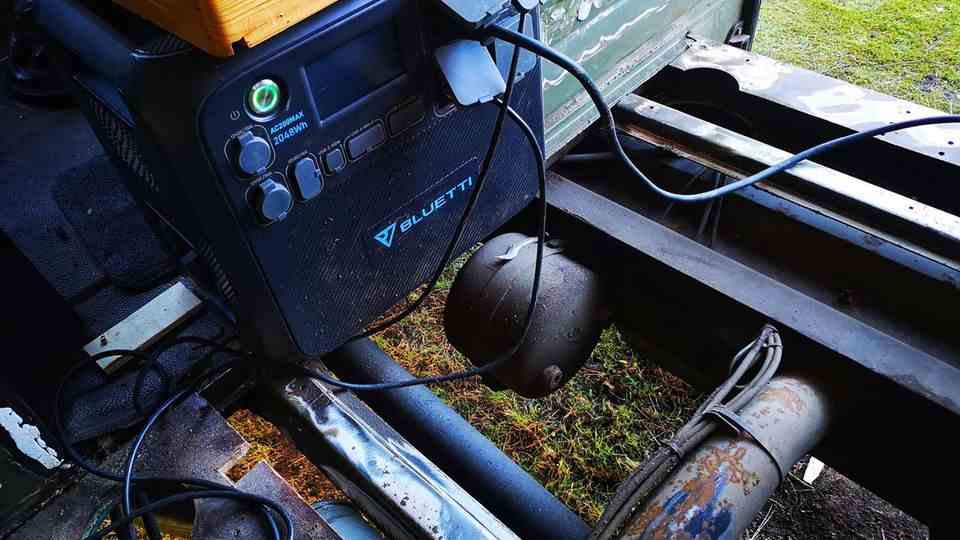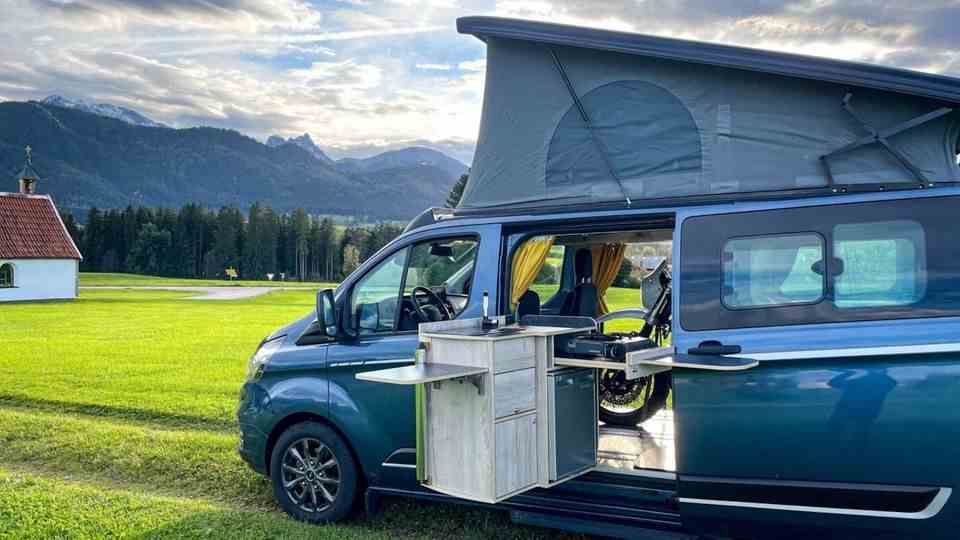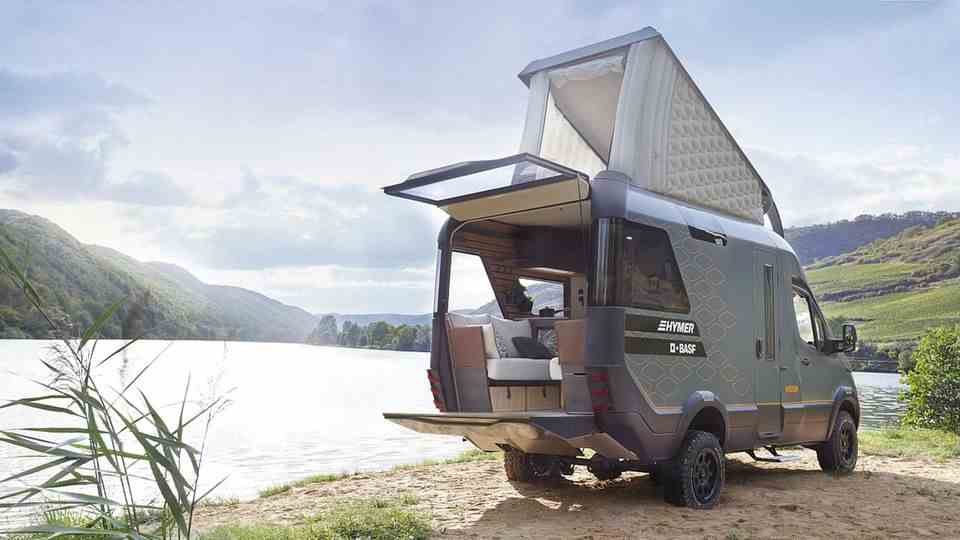This mobile power source offers power like from the mains. The bulky Ecoflow Delta Pro box can be recharged at any charging station on the go and can combine a home solar system with mobile storage. But it’s not cheap.
Power boxes are in – in a niche market. They promise mains-independent power supply, very similar to power banks for mobile phones – but now in size L with 12 volt and USB connections, but also with normal 230 volt alternating current. The Ecoflow Delta Pro we tested is no longer in size L, but in XXL. With a whopping 45 kilograms and dimensions of 63.5 length 28.4 depth 42 height, it is at the limit of a mobile system that you can just barely lift onto the back of the pick-up.
Power boxes provide electricity when there is no socket. In the leisure sector, they help campers, owners of boats or cabins without electricity, or renters of a garage without a connection. Or simply craftsmen, market people and farmers who need electricity on the meadow that they cannot get via an extension cable.
With them you can electrify a workshop trolley without a smelly and rattling generator. Depending on requirements, the boxes vary from models the size of a handbag to Delta Pro.
At the limit of the bearable
As a single module, the Ecoflow Delta Pro has a whopping 3600 watt hours of capacity. And it can handle a power consumption of 3,600 watts, even up to 4,500 watts when starting up. Why is that necessary? Everything that is operated with a normal Schuko socket can also be plugged into the box. The box handles high starting currents and current peaks better than a normal house fuse. The capacity is full – but of course not infinite.
If you draw 2000 watts non-stop from the system, the box will be empty in less than two hours. When camping with a cool box, laptop and lighting, the box should last for several days, without the power-guzzling cooling even over a week. When it comes to handicrafts, one filling is easily enough for a full working day or two – if you can put it that way. In the test, all devices could be operated with the device without any complaints. Whether vacuum cleaner, table saw or welding machine – there is no noticeable difference to the mains current.
The Ecoflow Delta Pro is geared more for a craft or cabin than a camper. For a vehicle the size of a Bulli, it is already very large, but above all the output is concentrated on the 230 volt sockets and not on 12 volts. If of course there are also USB A and C outputs, two DC5521 for 12 volts, a car output and an Anderson port. But there are no gimmicks like fields for contactless charging of the smartphone. There are of course charging connections.
We found it good that the Ecoflow has an integrated charger for 230 volts and that you don’t have to take another component with you. The feeding methods can be combined so that theoretically a consumption of 6500 watts is possible. The box draws 2900 watts from the socket – so it can be filled in just under two hours. Not much faster, but a cool addition: You can also hang the box on a car charging station, then it sucks 3000 watts. This makes it easier to recharge on tour.
Refueling at the electricity column
Of course, solar panels can be connected. But they don’t have to come from Ecoflow – almost all other makes with an MC4 connection fit. 1600 watts can be absorbed from solar energy – with the right voltage. This is a very high performance, but makes sense if the box is expanded with additional batteries. You can – also standard – charge the box with a cigarette lighter cable in the car. However, the amount of electricity is limited. The lithium iron phosphate cells are designed to last 6,500 cycles – in practice this can be translated as “forever”. The box can be controlled via the switches or via an app. In the case of a complex installation, the app would be mandatory because of its many control options; if you only use one box, the app is optional.
There is a petrol-powered generator that goes with the box. This is interesting for some markets because the generator can also bridge long power grid failures. With the box’s buffer, the generator doesn’t always have to start up when some current is drawn. A large device like the Delta Pro is not intended for carrying a little power with you at a festival or on the beach, the device is too bulky and too heavy for that. Despite the weight, the box is still reasonably ergonomic. You can pull it behind you as a “roller case”, the wheels and pull handle are solidly dimensioned. Two handles integrated into the housing help with lifting.
Integration into a house system
In terms of concept, the box can be integrated into a domestic solar system. The Ecoflow Smarthome Panel is not yet available in Germany, but in principle you can use the box as follows: A solar system is installed on the house or carport, and a Powerbox or several boxes are used via the Smarthome Panel to store electricity at home. The storage capacity of each device can be increased up to 23,000 watt hours. If you combine two smart boxes, the system has a maximum output power of 7200 watts, with three it is 10,800 watts. More electricity can also be taken from the grid.
Such a high drain from the battery system only makes sense if the boxes are combined with a powerful solar system. Then you can feed the entire household with your own electricity even during peak consumption times and also charge a car at the same time. Of course, stationary systems can also do this, but you cannot take individual modules with you to work or on trips. Overall, the approach is groundbreaking because it frees some of the technology from the immobile house and uses modules that are easy to change.
So who needs such a mega box? The Delta Pro is not a gimmick. Apparently because of the price alone, you should have a real need for mobile power. This can be recreational – whether it’s a cabin, a boat or a larger camper. In the leisure sector, systems made up of several components are often used. Your advantage: Experts can put together a system according to their needs. The disadvantage: the electrician is hopelessly overwhelmed with it. It is also not possible to construct an in-house system as compactly as an industrial product. These systems are then no longer mobile, but permanently installed.
One watt hour costs one euro
In order to have a lot of electricity available, generators are also often used. Of course, because of the petrol filling, they have unlimited capacity. But the box is the clean choice after all – the noise and odor of a generator usually make it impossible to use it in the leisure sector. You can’t use it indoors anyway. And the box isn’t that much more expensive either. A Briggs & Stratton generator with a continuous output of 3700 watts is just as heavy and unwieldy as the Ecoflow box and still costs 1700 euros.
Around 3800 euros are currently being asked for the Ecoflow Delta Pro. In today’s market situation, special offers have unfortunately become rare, so you have to reckon with this price. It roughly corresponds to the rule of thumb “One euro for one watt hour”. In view of the concentrated performance, this is a fair price – if you use the box. It’s just not good as a gimmick.




